Šis dokumentas sukurtas kaip gairės rengti ir administruoti žurnalo Information & Media specialiuosius teminius numerius.
1 etapas. Minties leisti specialųjį numerį (SN) iškėlimas
1. Specialiųjų numerių (SN) temas siūlo vyriausiasis redaktorius ar kiti Redakcinės kolegijos nariai arba mokslininkai, neįeinantys į Redakcinę kolegiją.
2. Specialieji numeriai (SN) privalo atitikti žurnalo misiją.
3. Sprendimą leisti siūlomą specialųjį numerį priima vyriausiasis redaktorius pasikonsultavęs su tais Redakcinės kolegijos nariais, kurie pasižymi ekspertinio lygmens žiniomis aptariamoje teminėje srityje.
4. Specialiajam numeriui turėtų būti paskirtas daugiau nei vienas redaktorius. Išskirtiniais atvejais specialųjį numerį galima patikėti rengti vienam redaktoriui. Tokiu atveju sprendimą daryti tokią išimtį būtina paremti aukščiausios ir nepriekaištingos redaktoriaus kvalifikacijos įrodymais.
5. Formalųjį sprendimą paskelbti specialiojo numerio leidimą visuomet privalo lydėti raštiškas kvietimas teikti publikacijas šiam specialiajam numeriui. Šis kvietimas privalo 1) būti parašytas glaustai ir konkrečiai; 2) laikytis akademinių tradicijų; 3) argumentuoti, kodėl specialiojo numerio tema yra aktuali ir inovatyvi. Vyriausiajam redaktoriui patvirtinus SN, kvietimas skelbiamas žurnalo svetainėje.
6. Tikimasi, kad SN redaktoriai sudarys šio SN recenzentų tarybą, į kurią bus įtraukti ne vien tik įprastiniai Redakcinės kolegijos nariai, tačiau ir mokslininkai bei praktikai iš išorės (tai yra neįeinantys į Redakcinę kolegiją), pasižymintys ekspertinio lygmens žiniomis SN teminėje srityje (jų kompetencija turi pranokti Redakcinės kolegijos branduolio kompetenciją šioje srityje). Praktikus derėtų įtraukti tuomet, kai SN temos apima aspektus, kuriuos nagrinėjant praktikai gali pasižymėti didele svarba.
2 etapas. Specialiojo numerio redaktorių kvalifikacijos vertinimas
7. Kandidatas (-ai) atlikti specialiojo numerio redaktoriaus pareigas privalo pasižymėti pakankama kompetencija šioms pareigoms.
8. Kvalifikacija vertinama remiantis kandidatų publikacijų sąrašu arba kitomis priemonėmis, kuriomis galima įrodyti pakankamą kandidato ekspertinių žinių lygį šioje srityje bei kandidato susipažinimo su akademinių publikacijų praktika lygį (bei patirtį) – įgūdžius, kaip organizuoti recenzavimo procesą, kaip vertinti apžvalgas ir t. t.
9. Jei neatsiranda kandidatų, pasižyminčių pakankama kvalifikacija eiti specialiojo numerio redaktoriaus pareigas, tuomet vyriausiasis redaktorius, pasikonsultavęs su Redakcinė kolegija, įvardija redaktorių, pasižymintį pakankama kvalifikacija, kuris papildytų kandidatų į redaktorius sąrašą.
3 etapas. Specialiojo numerio kokybės kontrolės užtikrinimas
10. Reikėtų vengti situacijų, kuomet specialųjį numerį organizuoja ir jo leidybai vadovauja tik vienas redaktorius. Išskirtiniais atvejais specialiojo numerio rengimui gali vadovauti tik vienas redaktorius. Tokiu atveju sprendimą daryti tokią išimtį būtina paremti išskirtinės redaktoriaus kvalifikacijos įrodymais.
11. Būtina, kad specialiojo numerio redaktoriai atstovautų įvairioms institucijoms.
12. Idealiu atveju specialiojo numerio redaktoriai yra bent iš dviejų skirtingų šalių.
13. Būtina vengti situacijų, kuomet specialiojo numerio redaktoriai atstovauja tik Lietuvos institucijoms. Išskirtiniais atvejais, kuomet neįmanoma rasti užsienio ekspertų, pasižyminčių pakankamomis lietuvių kalbos žiniomis, kad jie galėtų atlikti redaktoriaus vaidmenį, privaloma imtis papildomų priemonių, kad būtų užtikrinta specialiojo numerio rengimo proceso kokybė. Tarp šių papildomų priemonių gali būti konsultacijos su vyriausiuoju redaktoriumi ir / arba Redakcinės kolegijos nariais recenzavimo bei sprendimų dėl straipsnių priėmimo procese.
14. Kvietimas teikti publikacijas specialiajam numeriui, parengtas pagal priimtą Kvietimų teikti publikacijas specialiajam numeriui šabloną, yra svarbus įrankis užtikrinant kokybę bei proceso kontrolę, kadangi jame yra nuorodų, esančių šio proceso atskaitos tašku: 1) inovatyvumo bei atitikties žurnalo tikslams pagrindimas; 2) svarbiausios datos; 3) recenzijų skaičius; 4) specialiojo numerio Redakcinės kolegijos sudėtis; kiti aktualūs aspektai.
15. Kartu su kvietimu teikti publikacijas specialiajam numeriui redaktoriai privalo vyriausiajam redaktoriui pateikti planus: 5) kiek straipsnių planuojama publikuoti specialiajame numeryje; 6) kokia numatoma reklaminė bei informacijos skleidimo veikla; bei kokia dar informacija yra aktuali žurnalo administracijai.
4 etapas. Specialiojo numerio publikavimas
16. Kuomet vyriausiasis redaktorius jau yra formaliai patvirtinęs specialiojo numerio leidimą, būtina sąlyga specialiajam numeriui publikuoti yra paskelbtas kvietimas teikti publikacijas šiam specialiajam numeriui (žr. 1 etapas. Minties leisti specialųjį numerį (SN) iškėlimas).
17. Tikimasi, kad specialiojo numerio redaktoriai šiam numeriui pristatys redakcijos Įžanginį žodį. Idealiu atveju įvadinis redaktorių straipsnis apžvelgia visus straipsnius, įtrauktus į specialųjį numerį, ir šią apžvalgą papildo redaktorių požiūriu, kaip atrinktieji straipsniai ir / arba pats specialusis numeris prisideda prie aptariamos srities bei paties žurnalo raidos.
Kiti svarbūs aspektai
18. Specialiojo numerio redaktoriai negali būti specialiajam numeriui pateiktų straipsnių autoriai ar bendraautoriai.
